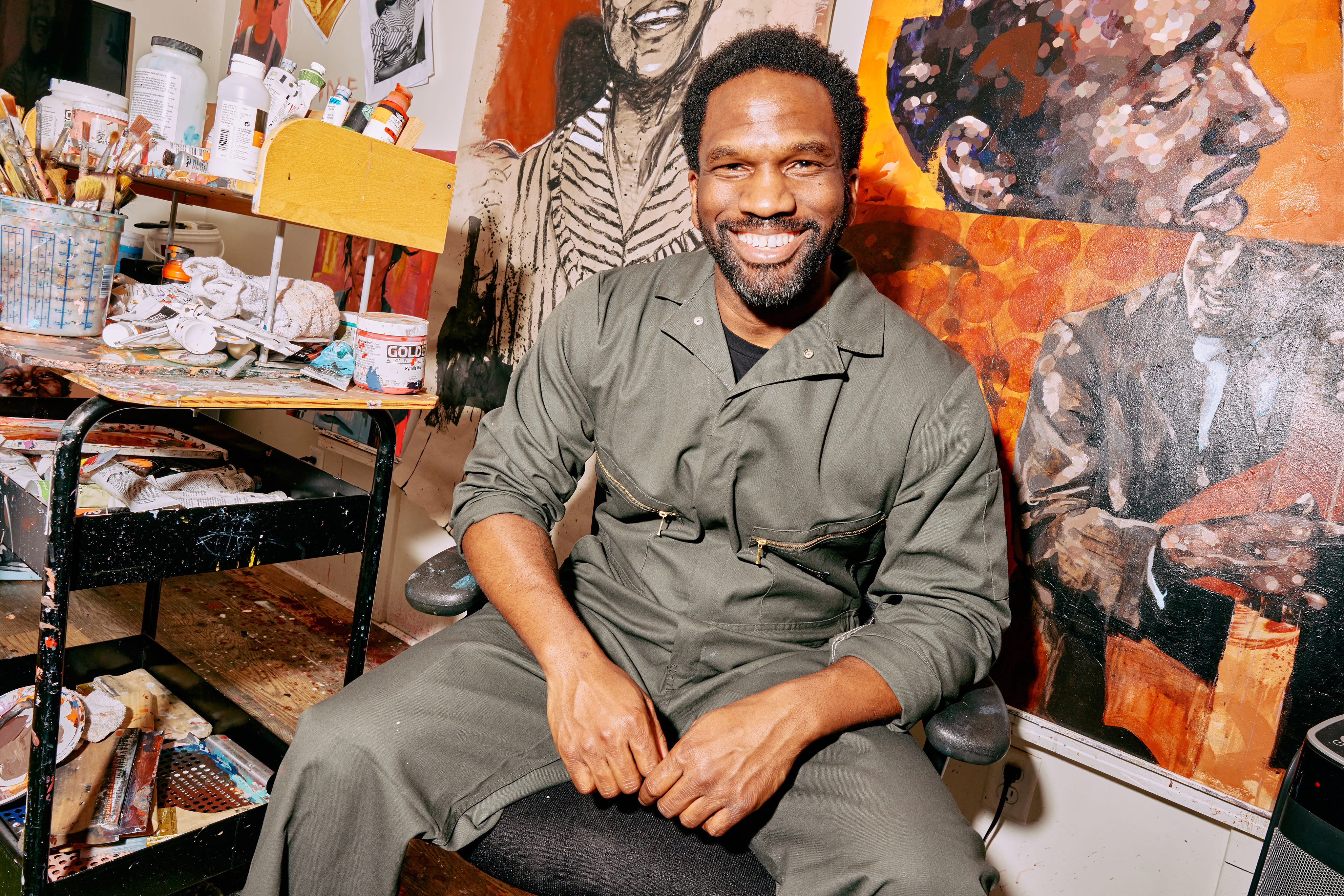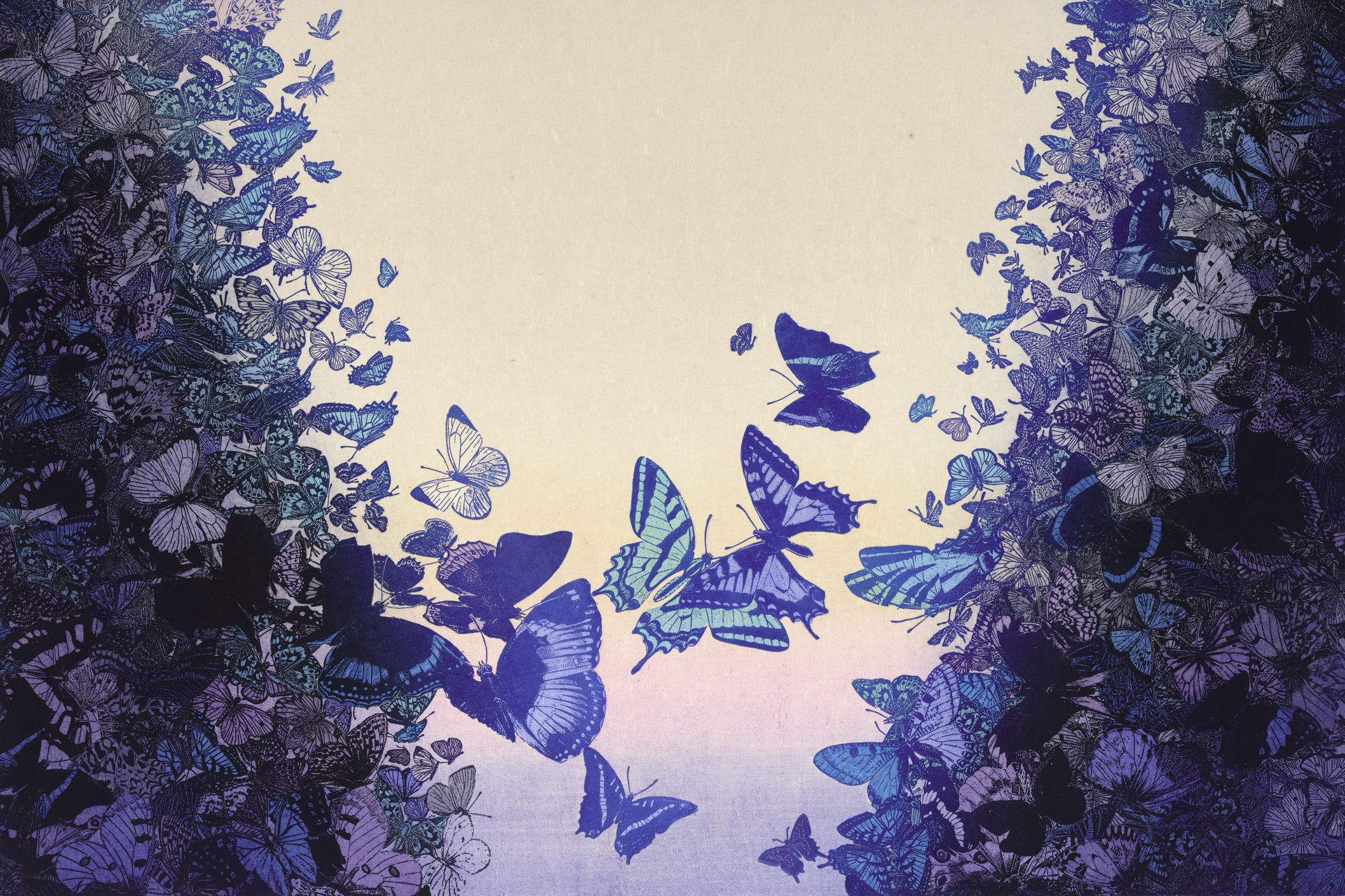Julian Gaines Is Bringing Jet Magazine to the Museum

Julian V. L. Gaines’s mother collected Jet magazines. The pamphlet-size issues, which reported on national Black culture and politics, piled up in his childhood living room. Each was its own “window onto another, wider world—a world suffused with dignity, respect, [and] a healthy dose of glamour….” Gaines writes in the artist’s statement for Seen, Not Heard, a suite of paintings he showed at Russo Lee Gallery this summer that recreated the magazine’s iconic covers.
The show opened August 5, a Thursday; the following Monday, a fire broke out at the neighboring restaurant, Bar Mingo, and the building’s shared HVAC system filled the gallery with smoke. “To the naked eye, you’d think, ‘Oh, everything’s fine,’” Russo Lee’s director of sales, Athena Frazier, told me. But the nearby fire covered the space with a layer of soot that forced the gallery to close through the end of the year to treat the smoke damage. In September, a restoration team removed and treated not only Gaines’s work but the gallery’s entire archive—1,500 pieces by dozens of artists including Robert Colescott, the influential Black painter and one-time Fernand Léger pupil who died in 2009, and Lisa Jarrett, the contemporary educator and artist celebrated for her assembled works that often incorporate Black hair.

Relatively speaking, the damage is minor, and all the work will be fully restored. But losing half a year, Frazier says, “is huge.” Russo Lee’s shows hang for a month, and two at a time, which means the closure canceled, postponed, or moved online up to a dozen shows. The pause created a financial problem for both the gallery and the artists (the latter often devote one if not two years to a show). But it also took one of the city’s most significant and longstanding galleries out of circulation; since 1987, Russo Lee has been a major site for viewing internationally respected art, free of charge.
Though his show was only open for a weekend, the smoke damage didn’t cost Gaines his year’s salary. All but four of his 11 paintings sold before the fire. Now fully restored, he will remount the remaining paintings at a rare impromptu show in the Portland Art Museum’s Miller Gallery Wednesday, October 23, and will open the weeklong show with an artist talk (5:30–7pm).

Gaines grew up reading Jet in the ’90s and early aughts in Chicago, but this series references the magazine’s early years, when it reported on the Black experience throughout the Civil Rights Movement. During that period, its covers featured black and white photographs pasted over brightly colored backgrounds, approximating a Pop Art portrait style, which makes them great candidates to be adapted as paintings. One from Gaines’s series, JET BLACK . 5 (FAMOUS FAT WOMEN), is of Velma Middleton, the dancer and singer who starred in Louis Armstrong’s band for 18 years, famous for her splits—and for being called too big to dance. Another is of Nancy Holloway, a “former New York switchboard operator turned singer on a dare in Europe,” according to the magazine’s headline; the story asked why Black American performers had better luck finding stardom abroad. Another, a facsimile of the August 14, 1958, cover, features Sylvia Vincent, New York’s “brainiest” Black nurse. In September of 1960, Nida Taliaferro graced the cover: “Pretty high school coed has reasons for staying in school.” Not only did Jet champion Black celebrities, Gaines said recently, “it also highlighted the value of everyday Black people.” Gaines titled his paintings with the magazine’s cover lines but otherwise redacted their language, including names, instead making abstract compositions with the blocks of censored text. Looking at the paintings, you’d have to do your own digging to get even the cursory glimpses into these figures laid out above, which is exactly the point.
Transforming the historic images into art objects for the present moment is at the heart of Gaines’s ambition. That the show only lasted a few days, at least in its original form, seems a cruel joke. Yet it did reach people. “Although much of the work wasn’t seen, a lot of people did hear about it,” Gaines told me. At a talk he gave at Soho House in August, several audience members mentioned their personal connection to the magazine. One even wound up at the talk after chancing upon the gallery and recognizing the Jet covers in the window; their parents collected Jet, too.

The magazine has been a cultural touchstone of Black America since it started in 1951. And Gaines is far from the first artist to make work inspired by it. In fact, a 2014 show at the Studio Museum in Harlem was organized precisely to showcase the ways contemporary Black artists, including Portlanders Jeremy Okai Davis and Mickalene Thomas, incorporate Jet and its sister publication, Ebony, into their work. Gaines follows a similar, communal thread. More than making a direct statement about the people whose portraits he’s recreating, resurfacing specific narratives, he sees his project as a means to float Black stories, in a broad sense, higher in the cultural conversation. From there, a viewer can pick them up and do their own research, or pull on their own personal connections. “They may even be related to an individual,” Gaines said, mentioning that his grandmother was once featured in Jet.
Working at this slight remove, Gaines says, allows him to make personal work without overtly referencing his own life. “I’m not gonna paint my mother,” he says, calling himself something of a private person. “I’m not painting my grandmother.” Instead, he’s painting the figure of a grandma, as it were, stretching individual stories, as a magazine does, to speak to the larger narrative.




